Ijraset Journal For Research in Applied Science and Engineering Technology
- Home / Ijraset
- On This Page
- Abstract
- Introduction
- Conclusion
- References
- Copyright
Artificial Intelligeence in Construction Industry
Authors: Dr. M. S. Kuttimarks, Khot Aamir Sarosh , R. Mahadev Swamy , Dr. Yashvant Patil , Dr. Menbere Aklilu
DOI Link: https://doi.org/10.22214/ijraset.2024.64105
Certificate: View Certificate
Abstract
The construction industry is currently experiencing an increasing skill shortage due to which, many businesses are pressurized. Artificial Intelligence is bringing transformation in construction industry through automation and in finance by implementing business models. Artificial Intelligence is providing novel solutions to the problems faced in construction industry. Artificial Intelligence when implemented in Construction Industry is expected to alter Business Models in logistics, customer relationship management, and support. Artificial Intelligence helps in providing amicable realistic solutions to situations, training, reducing injuries, and costly construction industry. Artificial Intelligence is the science and engineering of making intelligent machines, especially intelligent computer programs. Implementation of artificial intelligence in the construction industry and analysis of existing technologies. Here, the research is done on the applications which are done on Artificial intelligence. The study used fuzzy logic methods and machine learning to mark visual data and analyze it for potential threats and to reduce all possible risks. This technology allows users to explore different construction plans in real time and understand the impact of key building decisions on the various factors especially cost and duration of a project. The study highlights the potential of artificial intelligence and machine learning technology in the construction industry. The implementation of the proposed approaches will improve the efficiency of construction, its safety and quality. The results of the study will be useful in the standardization of construction processes and the processing of data on construction projects.
Introduction
I. INTRODUCTION
Engineering and technology are two technologies that cannot be separated in today's engineering for a better life. Due to our rapid expansion and growing demand for multifaceted technical applications, we must keep up with the power of related subjects in general and the construction industry in particular. Due primarily to the technology's potential to enhance construction performance and efficiency, there has been an increase in the use of artificial intelligence (AI) in engineering and construction management in recent years. The benefits that AI can bring to the construction industry include preventing cost overruns, improving site safety, and managing projects efficiently. There has already been substantial growth in the following AI areas of big data and analytics, robotics, automation, data integration, and wearable technology. Implementing AI technologies and realizing the benefits it may bring is difficult. Most algorithms require accurate data for training, and collecting data is costly and time consuming at the beginning. The implementation of AI in construction remains in the initial stages, even though some larger construction companies have already begun to enjoy the benefits of these technologies.
A. Challenges in Construction Industry
The construction industry is faced with many challenges that have hindered its growth and led to extremely low productivity levels when compared with other industries such as manufacturing. The absence of adequate digital expertise and technology adoption within the construction industry has also been linked to cost inefficiencies, project delays, poor quality performance, and uninformed decision-making and poor performance in terms of productivity, health and safety. In recent years, it has become apparent that the construction industry must embrace digitisation and rapidly improve technological capacity especially with challenges of existing labour shortages, COVID-19 pandemic and the need to provide sustainable infrastructures. A foremost digital technology, Artificial intelligence (AI), has helped to achieve significant contributions to the improvement of business operations, service processes and industry productivity in recent years. The subfields of AI such as machine learning, natural language processing, robotics, and computer vision, optimisation, automated planning and scheduling, have been applied to tackle complex problems and support decision-making for real-world problems. However, the construction industry is yet to reap any significant benefit from AI despite its existing challenges.
B. Digitization of Construction Industry
Construction remains one of the least digitized industries in the world and continues to struggle with the beneficial adoption of AI and other digital technologies Zhao et al., 2016. However, it is clear that there exists a lot of grey areas in the research trend of AI applications, future opportunities and barriers to adoption in the construction industry. Robotics has been applied in site monitoring and performance evaluation, offsite assembly, and the management of construction materials, plant and equipment.
Luca Rampini, Fulvio Re Cecconi, The Architecture, Engineering, Construction and Operations (AECO) sector is a significant player in the economy, accounting for about 6% of global GDP, and is the largest consumer of raw materials and other resources (Desruelle et al., 2019). The effectiveness of AM (Asset Management) in the O&M stage will heavily rely on a BIM-enabled environment with continuous information on asset conditions and performances, reliable communication channels, and documented professional knowledge from experience. Aiming to achieve a new industry concept – the so-called 'Construction 4.0'-, the entire sector is reshaping itself by opening to new technologies and digital strategies. In this context, Artificial Intelligence (AI) might act as a backbone for the innovative changes the industry faces. AI is a branch of Computer Science that provides computers with human-like capabilities, such as problem-solving and decision-making skills.
C. Machine Learning Approach
Artificial intelligence (AI) is a region of software engineering that accentuates the making of clever machines that work and respond like people Rahul Hadiya, Hani Upadhyay , Dr. J. R. Pitroda,. A portion of the exercises PCs with Artificial intelligence are intended for include: Speech recognition, Learning, Planning, Problem solving. Artificial intelligence is a part of software engineering that expects to make wise machines. AI for Better Design of Buildings Through Generative Design Building Information Modeling is a 3D version primarily based procedure that offers design, building and development experts experiences to proficiently design, plan, build and oversee structures and framework. So as to plan and structure the development of a structure, the 3D fashions want to think about the design, building, mechanical, electrical, and plumbing (MEP) plans and the arrangement of exercises of the separate groups. Project Planning In 2018, An AI Start-up propelled with the guarantee that its robots and AI maintain the way to illuminating late and over spending development ventures. In the event that things appear to be off course, the supervisory group can step in to manage little issues before they emerge as massive troubles. Algorithms of the density will use an AI approach known as “reinforcement studying.” Off-site Construction Development organizations are progressively depending on off-site manufacturing plants staffed via self-ruling robots that piece together parts of a structure, which are then sorted out by human specialists on location. Information produced from pictures caught from cell phones, drone recordings, security sensors, building data displaying (BIM) and others have become a pool of data. This presents an open door for development industry experts and clients to investigate and profit by the bits of knowledge created from the information with the assistance of AI and AI frameworks. Using drones to gather accurate survey maps and aerial images of a job site, as well as track progress remotely, saves on a project’s time and cost. Plus, the aerial images can give project managers a different perspective of the project, and help spot potential issues that may not have been apparent from the ground. AI for Post-Construction Building supervisors can utilize AI long after the development of a structure is finished. Computer based intelligence can be utilized to screen creating issues and even offers answers for forestall issues. Specialists can wear computer generated reality goggles and send smaller than usual robots into structures underneath development. Rather, it will change plans of action in the development business, decrease costly blunders, lessen worksite wounds, and make building activities more effective. Pioneers at development organizations ought to organize venture dependent on zones where AI can have the maximum effect on their organization's interesting wishes. Early movers will set the bearing of the business and advantage in the fast and long haul.
D. Legal Proceedings by AI
Aditya Joseph, George, A structure plan is approved when it is finished on schedule, under budget, according to specifications, and to the satisfaction of all stakeholders. Functionality, contractor profitability, the lack of lawsuits and legal proceedings, and "fitness for purpose" for occupiers have all been used as indicators of project success. Delays are one of the most serious issues in building projects. Every construction project has delays, and the magnitude of such delays differs greatly between projects. Some works are only a few days behind schedule, while others were pushed back for over a year. Construction activities are generally completed with high costs, prolonged timelines (delays), and quality problems. It is critical that general management monitor project development in order to reduce the potential of delays occurring or identifying them at an early stage. The construction industry is one that has a lot of unpredictability in its day-to-day operations.
The construction engineering and management (CEM) industry within the architects, engineering, and construction (AEC) industry is beset with its own serious complications because it encompasses a wide range of construction-related activities and processes, as well as human factors and interactions.
E. Artificial Intelligence
There have been ups and downs in the history of AI, with logic-based approaches in the 1950s and early 60s, knowledge-based expert systems in the 1970s and 80s, and data-driven approaches (from 2000 onwards) with periods of disillusionment and reduced funding in-between (Russell and Norvig, 2003). Due to these constant changes, the definition of AI has always been mutable. However, the High-Level Expert Group (HLEG), appointed by the EU commission, defines AI as "software (and possibly also hardware) systems designed by humans that, given a complex goal, act in the physical or digital dimension by perceiving their environment through data acquisition, interpreting the collected structured or unstructured data, reasoning on the knowledge, or processing the information, derived from this data and deciding the best action(s) to take to achieve the given goal." (Craglia et al., 2018). AI branches that mimic human intelligence include machine learning (ML), computer vision (CV), and natural language processing (NLP), as shown in Figure 1.1 and 1.2
E. Deep Learning
Deep learning (DL) allows computational models with multiple processing layers to learn multiple levels of abstraction for data representations (Lecun, Bengio and Hinton, 2015). These techniques have vastly improved the state-of-the-art in speech recognition, visual object recognition, object detection, and various other fields like drug discovery and genomics. DL uses the backpropagation algorithm to show how a machine should change its internal parameters to compute each layer's representation from the previous layer's representation, revealing intricate structures in large data sets (Rumelhart, Hinton and Williams, 1986). The lack of sufficient data and computational power hindered the deployment of DL algorithms until 2012 when the success of AlexNet (Krizhevsky, Sutskever and Hinton, 2017) in ImageNet – an image classification competition – prompted deep neural networks to make a comeback. AlexNet's main contribution was to combine DL with large datasets effectively. Convolutional Neural Networks (CNNs) and Recurrent Neural Networks (RNNs) are two common DL network structures
CNNs are an advanced form of ANN that use a mathematical operation known as convolution in place of general matrix multiplication in at least one of their layers. They are widely employed in Computer Vision since they were created primarily to process pixel data (Albawi, Mohammed and Al-Zawi, 2018). RNN is a class of artificial neural networks where connections between nodes can create a cycle, allowing output from some nodes to affect subsequent input to the same nodes (Sherstinsky, 2020).
II. LITERATURE REVIEW
A. Resources Utilized For Infrastructure Construction
Tom Andersen et al. (1996) carried out research based on AI in construction and focussed on expert systems lab. He observed that ESL (Expert Systems Lab requires) the strong technical computer support that was not present then. The ESL was neglected and the reason was its narrow prototypes. For every project evaluation was generally done using ESL in five different stages. But harmony between IT (Information Technology) system and this process wasn’t up to the mark. Data and information exchange process among the different firms was major obstacle with available computer and IT technology at that time. Access of the project data was very difficult for employees working on same projects in different firms. Chien Ho Ko et al. (2003) reviewed by way of using Fuzzy logic (FL), neural networks (NNs), and genetic algorithms (GAs) they broaden an Evolutionary Fuzzy Neural Inference Model (EFNIM). Integrating those 3 strategies, the EFNIM uses GAs to simultaneously search for the fittest membership functions (MFs) with the minimum fuzzy neural network (FNN) shape and choicest parameters of FNN. Furthermore, this study proposes an object-oriented (OO) device improvement method to integrate the EFNIM with OO pc approach to expand an unfolding Fuzzy Neural Inference System (OO-EFNIS) for solving production control troubles. Simulations are performed to exhibit the application capacity of the EFNIS. This framework may be utilized as diverse canny choice help device for decisionmaking to clear up manifold creation management issues.
1) Types Of Resources For Infrastructure Construction
T. Taskiran (2010) objectives to research the appropriateness of AI methods for expectation of CBR (Californian Bearing Ratio). In this unique situation, artificial neural network (ANN) and gene expression programming (GEP) have been executed for the expectation of CBR of first-rate grained soils from Southeast Anatolia Region/Turkey.
Using CBR test records of fine-grained soils, the consequences have proven that each ANN and GEP are observed with the intention to analyse the relation among CBR and basic soil characteristics. Additionally, sensitivity analysis is done and it is located that maximum dry unit weight (cd) is the simplest parameter on CBR among the others such as plasticity index (PI), optimum moisture content, sand content (S), clay + silt content (C + S), liquid limit (LL) and gravel content(G) respectively. Considering the CBR soil checks to be fairly hard, time consuming and luxurious, it may be emphasized that the use of ANN and GEP fashions for estimating CBR, in terms of soil parameters, might be useful tool to be used for preliminary identity of material or/and a base of judgment for the validity of the CBR values. Artificial intelligence can help green users clear up engineering troubles, additionally can assist experienced users to solve complex problems, and also within the group via the synthetic intelligence generation to proportion the enjoy of every member. Nabeel S. Juwaied et al. (2017) produced a pile design equation using “Multiple Linear Regression (MLR)” model. Simple geotechnical data of the in situ drilled shaft and driven pile tests was used to develop this model. This model can develop different types of piles for the given geotechnical characteristics. Under the application of axial compression load this model is introduced. Soil and pile behaviour based on actual data was interpreted and simulation of complex behaviour of soil-structure carried out using MLR model. The MLR model requires a dataset of tests carried out on piles at different locations. This MLR model showed higher accuracy in prediction of the pile designs under any given situations. Faster and accurate outputs with simple dataset is possible with these type MLR models.
2) Artificial Neural Networks (ANN)
Mohsen Hatami et al. (2019) offers an in-intensity assessment of AI techniques and how the generation can be petitioned to computerized construction fabricating cycle. The paper evaluations synthetic neural networks (ANNs) (e.g., Deep studying and transfer learning). The goal of the paper is to assist become aware of the route for future studies and development in this discipline. Industries wherein smart fabricating and synthetic intelligence strategies had been efficaciously carried out, the development industry can benefit from those advances throughout the globe consisting of all elements of venture designing, observation, manage, as well as protection analysis. Benefiting from AI that we can observe other industrial processes which include making use of predictive AI solutions for lowering R&D (Research and development) cost, on-line optimization for higher tracking and control, supervised studying for modularization and prefabrication in creation, robotic togetherness for modular or prefabrication production, and device learning strategies for picture reputation for hazard and protection supervision. Bob Prieto et al (2019) focussed on how any project execution done by using the AI, machine learning and language processing. Business management, sales, data, finance, human resources, operations, engineering designs, supply chains, logistics, construction can be easily performed proficiently using AI techniques. Adoption of the AI system consists several barriers like lack of compassion, lack of assets and lack of preparedness. Some serious threats to the system are related to cyber security, data scrapping and hacking of the system. Marte H. Schia et al (2019) reviewed how Artificial Intelligence can be implemented in construction industry and presented a single case study. Research indicated that technology, process and culture have equal importance to make this technology use successful with a time.
B. Artificial Linguistic Internet Computer Entity in construction
The study showed some results that are derived by using two different techniques in construction named Implementation of ALICE (Artificial Linguistic Internet Computer Entity) and implementation of Touchplan. These techniques are respectively called digitization and digital transformation. This technology improves the workflow and work tasks of the construction projects. Box colours indicates how much the implementation of given aspect reached. Darker the background higher the efficiency of implementation. Touchplan is the digital version of physical boards and sticky notes, a collaborative web-based tool for construction projects. Where in ALICE by analysis and optimization tools based on AI, schedule of the project is provided as an output. The outcomes expected right here are injury severity, damage kind, frame part impacted, and incident kind. Now results are highly predictive, confirming the validity of the unique method. Zaher Mundher Yaseen et al. (2020) developed a hybrid artificial intelligence model named integrative Random Forest classifier having Genetic Algorithm optimization (RF-GA) for delay problem prediction. Collection of data of various projects in Iraq were carried out. Data of about 40 projects collected which were related to delay levels of the project. This paper summarizes the usage of clever optimization systems in civil engineering and the researchers performed within the subject. The construction industries are on the verge of digitalization, which is disrupting traditional processes and also holds many opportunities in store. Artificial intelligence is expected to increase efficiency throughout the entire value chain – from the production of building materials to the design, planning and construction phase itself, and facility management as well. As the construction industry continues to move toward increased automation to increase safety and on-site productivity, AI and machine learning applications will help get the job done on time and on budget.
C. Machine learning-based delay risk assessment models
ADITYA JOSEPH1, DR. K J GEORGE2 The main reason of this article is to assist members of the construction project team in understanding the elements that must be regularly checked in order to finish the work on time and on budget. As a result, the study's goal was to create a neural network model (ANN) model that could predict the performance of construction works based on the different speculation specified. A data collection for machine learning applications was created using 48 usable replies gathered from subject matter experts. The approaches of K-Nearest Neighbors (KNN), Artificial Neural Networks (ANN), Support Vector Machines (SVM), and Ensemble were investigated. The most important independent factors, according to feature subset selection, were "slowness in decision making," "delay in sub-contractors' work," "architects'/structural engineers' late issuing of instruction," and "waiting for approval of drawings and material supply." The model for finding the risk of delay was find out by ANN, and it was then finished with a classification accuracy of 93.75 percent. After the final model created in this study might help construction companies manage project risk on high rise building. The building business is undergoing a technological transformation that will increase productivity. Project delays and abandonment, which have become a threat in tall construction projects, are a serious under-productivity concern. Numerous research on the causes of building delays have previously been conducted; however, the present difficulty is establishing prescriptive methods to address the issue. This work contributes significantly to this goal by establishing a model that might aid in the assessment of delay risk in tall construction projects. 36 delay risk factors were considered in the development of the delay risk model, and further analysis revealed that "slowness in decision making," "delay in sub-contractors' work," "architects'/structural engineers' late issuance of instruction," and "waiting for approval of shop drawings and material samples" were the most influential factors. Subjective data on these characteristics gathered from industry specialists was then utilized to create a classification model using ANN, with the results revealing an exceptional performance level of 93.75 percent classification accuracy. According to the findings of this study, machine learning might be a viable technique for constructing models that properly estimate the risk of delays in tall construction projects.
III. METHODOLOGY
The methodology adopted for capturing the data, needed to achieve the aim and objectives of the research. The research methodology selected comprised a comprehensive literature review, questionnaire to the construction industry practitioners, a statistical analysis of the survey data and a systematic exploration. It is organized in sections covering: the formulation of the objectives of the study, identification of the resource constraint factors and design, data collection using the Literature survey, data analysis by the descriptive statistical analysis, identification of critical factors using the factor analysis test, selection of the final critical factors, development of the model and its validation, scenario analysis, and findings and conclusion.
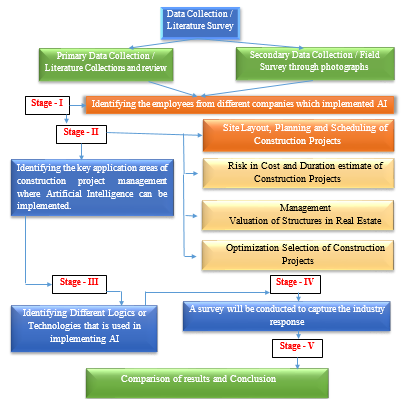
Figure 3.1: Methodology of Research Flow
IV. RESULTS / DISCUSSION
The findings based on sequential literature review revealed that various AI technologies exists, and each has a different purpose and application. Table 1 and 2 shows the application of each identified Artificial Intelligence technology in construction projects. The research findings revealed application of each AI technology on each project life cycle phase as illustrated.
Table 4.1: Summary of Applications of AI in Construction Methodology and Industry
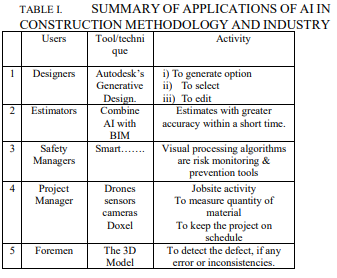
Table 4.2: Research Findings illustrating justification for each AI technology application (Source: Author)
|
Sr.l |
Artificial Intelligence Technology |
Application |
References |
|
1 |
AI-Knowledge Management |
Design data, budgets, specifications, technical drawings, data collection, storage |
(Zhang et al., 2009). (Zhong et al., 2017), (Jang et al., 2019), (Lan et al., 2018) |
|
2 |
Fuzzy Logic |
Initial project scoping, preliminary and feasibility studies, baseline risk assessments |
(Basaif et al., 2018), (Johnsonbabu, 2017), (Le et al., 2019), (del Caño et al., 2016), (Ju et al., 2016) |
|
3 |
Monte Carlo Simulation |
Baseline risk assessments, project risk assessments |
(Johnsonbabu, 2017), (del Caño et al., 2016), (Ju et al., 2016), (Salling and Leleur, 2017) |
|
4 |
3D Design Technology |
Modelling and simulation |
(Benotsmane et al., 2019), (Neelamkavil, 2009), (Štefani? and Stankovski, 2018), (Tan, 2018) |
|
5 |
Building Information Modelling (BIM) |
Modelling, simulation, integrated project management toolkit |
(Carbonari et al., 2019), (Capocchiano and Ravanelli, 2019); (Bongiorno et al., 2019), (Neelamkavil, 20090, (Hepton , 2019), (Tan, 2018), (Chen et al., 2018); |
|
6 |
Monte Carlo Simulation |
Modelling and simulation |
(Salling and Leleur, 2017), (del Caño et al., 2016), (Ju et al., 2016) |
|
7 |
Robots |
Substitute for human operators for high risk activities |
(Neelamkavil, 2009), (David, 2015), (Bhugin et al., 2017), (Schoeman et al., 2017), (Chen et al., 2018) |
|
8 |
Automation |
Machine automation using logic systems |
(Ginzburg et al., 2018), (Huang and Liao, 2019), (Bumpei and Yashiro, 2019) |
|
9 |
Artificial Neural Networks (ANN) |
Productivity forecasting, modelling |
(Chao, 1994), (Muqeem et al., 2011), (Golnaraghi et al., 2019) |
|
10 |
Expert Systems |
Modelling |
(Golnaraghi et al., 2019), (Islam et al., 2019), (Hadj-Mabrouk, 2019) |
|
11 |
Drones |
Remote surveillance, unmanned autonomous vehicles (UAV) |
(Murugesan et al., 2019), (Mondal and Syryamkin, 2019), (Rubio et al., 2019), (Paulino et al., 2019), |
|
12 |
Virtual reality |
Visual simulation, augmented reality |
(Neelamkavil, 2009), (Benotsmane et al., 2019), (Tan, 2018) |
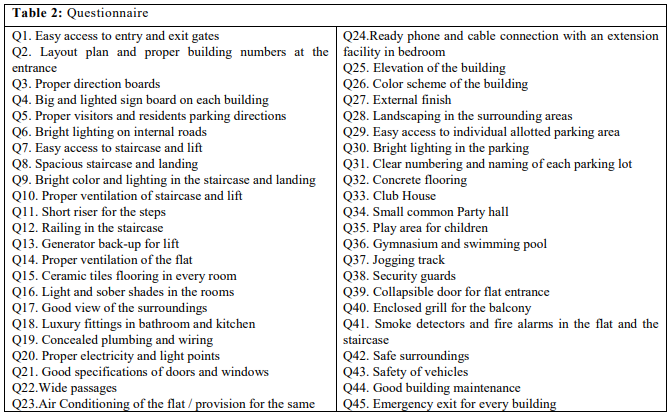
Figure 4.3: Data Collection through Questionnaire Survey
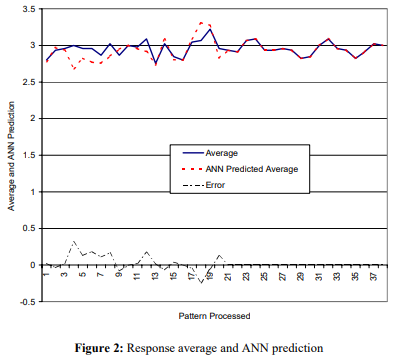
Figure 4.4: Response average and ANN prediction
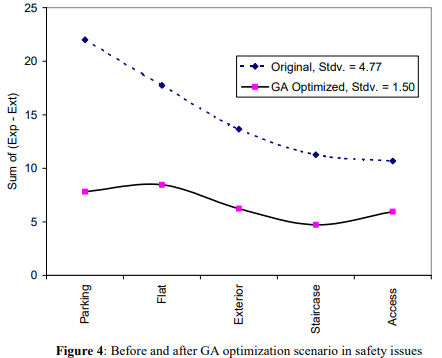
Figure 4.5: Before and after GA optimization scenario in safety issues
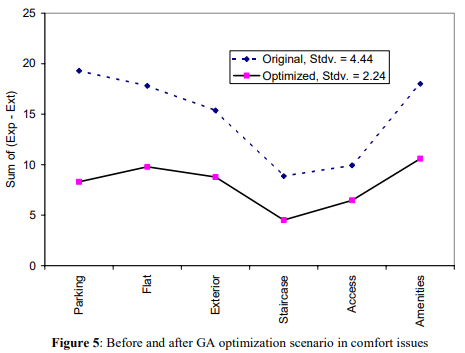
Figure 4.6: Before and after GA optimization scenario in comfort issues
Conclusion
In conclusion, the evaluation of prefabricated slabs for this building project revealed key performance findings - positive or negative aspects related to strength, installation, cost, etc.. These findings suggest that prefabricated slabs can be a positive assessment - suitable, viable, efficient option for construction, depending on factors like e.g., building type, project scale. Further research on prefabricated slab evaluation could provide even more comprehensive insights into their effectiveness in the building industry. The finite element method (FEM) analysis successfully evaluated the performance of prefabricated slabs within the building model. This approach provided valuable insights into the slab’s behavior under various loading conditions, allowing for assessment of its strength, deflection, and potential cracking patterns. The FEM analysis offers a reliable and efficient tool for optimizing prefabricated slab design in future building projects.
References
[1] Abdirad, H.; Mathur, P. “Artificial intelligence for BIM content management and delivery: Case study of association rule mining for construction detailing”. Adv. Eng. Inform. 2021, 50, 101414. [2] Bharadwaj, R.,(2018) “AI Applications in Construction and Building –Current Use-Cases”.Accessed12/12/2018.https://emerj.com/aisector-overviews/ai-applications-construction-building/ Accessed Jan 29, 2019. [3] C.D.-P.S. Chien, W. Huh, Y. Jang, J. Morrison. “Artificial intelligence in manufacturing and logistics systems: algorithms, applications, and case studies”. Int. J. Prod. Res., 58 (9) (2020), pp. 2730-2731. [4] Chien-Ho Ko and Min-Yuan Cheng “Hybrid use of AI techniques in developing construction management tools”, Elsevier science B.V. journal, PII: S0926-5805(02)00091-2, www.elsevier.com/locate/ autcon [5] D. Gransberg and M. A. Ellicott, “Life cycle project management. AACE International Transactions”, American Association of Cost Engineers. (1997). [6] George F. Bigham, Simon Adamtey, Lameck Onsarigo, and Neelima Jha, “Artificial Intelligence for Construction Safety: Mitigation of the Risk of Fall”, Springer Nature Switzerland AG 2019, AISC 869, pp. 1024–1037, 2019. https://doi.org/10.1007/978-3-030-01057-776. [7] H. Owolabi, “Robotics and automated systems in construction: understanding industry-specific challenges for adoption”, Journal of Building Engineering 26 (2019), 100868. [8] Internetsociety,(2017) “Artificial Intelligence and Machine Learning: Policy Paper”. https://www.internetsociety.org/resources/doc/2017/artificial-intelligence-and-machine-learning-policy-paper/ Accessed Jan 20, 2019. [9] J.K.C. Kingston, 2018, “Artificial Intelligence and Legal Liability”, https://arxiv.org/ftp/arxiv/papers/1802/1802.07782.pdf [10] Keshari, R., & Kansal, M. (2020). “A comprehensive review of AI applications in sustainable construction”. Journal of Cleaner Production, 268, 121868. [11] Li, J., Lu, W., Wu, P., & Li, Y. (2019). “Application of artificial intelligence in building energy management systems: A review”. Renewable and Sustainable Energy Reviews, 112, 917-935. [12] M. Chui, S. Francisco, “Artificial Intelligence the Next Digital frontier?”, S.L, McKinsey and Company Global Institute, 2017. [13] Oprach, S.; Bolduan, T.; Steuer, D.; Vössing, M.; Haghsheno, S. “Building the future of the construction industry through artificial intelligence and platform thinking”. Digit Welt. 2019, 3, 40–44. [14] Palaniappan, K.; Kok, C.L.; Kato, K. “Artificial Intelligence (AI) Coupled with the Internet of Things (IoT) for the Enhancement of Occupational Health and Safety in the Construction Industry”. Int. Conf. Appl. Hum. Factors Ergon. 2021, 31–38. [15] R, Bharadwaz, 2018, “AI Applications in Construction and Building – Current Use-Cases”, https://emerj.com/ai-sector-overviews/ai-applications-construction-building/ [16] S. Venkata Nagendra1, Nadendla Rafi2,’ “Application of Artificial Intelligence in Construction Project Management”, IJRESM, Volume-1, Issue-12, December-2018| ISSN (Online): 2581-5792. [17] UAE Government, (16 Jan 2020), “UAE Strategy for Artificial Intelligence”, Available: https://u.ae/en/about the-uae/strategies-initiatives-and-awards/federal-governments-strategies-and-plans/uae-strategy-for artificial-intelligence [18] Vandana Gandhi, (Feb 15,2015), “What is ARTIFICIAL INTELLIGENCE.PPT (PDF)”, Available: https://www.slideshare.net/vandanagandhi9/artificial-intelligenceppt-44690011 [19] Wadlow, T., (2018) “Feature: How Artificial Intelligence Supports the Construction Industry”. https://www.constructionglobal.com/equipment-and-it/feature-how-artificial-intelligence-supports-construction-industry Accessed Jan 20, 2019. [20] X. Yao, J. Zhou, J. Zhang, C.R. Boër. “From Intelligent Manufacturing to Smart Manufacturing for Industry 4.0 Driven by Next Generation Artificial Intelligence and Further on. 5th International Conference on Enterprise Systems”, Beijing (2017). [21] Yang, X., Fang, Y., Li, C., & Yao, X. (2020). “A review of artificial intelligence applications in green building”. Journal of Cleaner Production, 242, 118443
Copyright
Copyright © 2024 Dr. M. S. Kuttimarks, Khot Aamir Sarosh , R. Mahadev Swamy , Dr. Yashvant Patil , Dr. Menbere Aklilu . This is an open access article distributed under the Creative Commons Attribution License, which permits unrestricted use, distribution, and reproduction in any medium, provided the original work is properly cited.

Download Paper
Paper Id : IJRASET64105
Publish Date : 2024-08-29
ISSN : 2321-9653
Publisher Name : IJRASET
DOI Link : Click Here
 Submit Paper Online
Submit Paper Online

